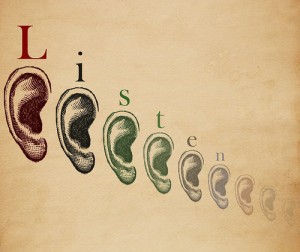We always need to keep in mind that every choice and every decision that we make, no matter how sound, will please some people, but not everyone. “You can’t please everyone” is a saying that you hear all the time, but I remember being in high school when the impact of this statement really hit me. At that young age, I vowed to think about decisions in a different light with a component of any decision being to understand which people I cared about pleasing, and more importantly, which people could jump in a lake if they didn’t like my decision. This dynamic applies to everyday life and isn’t unique to community managers, but it does come up often when making decisions on behalf of the community.
 A few tips:
A few tips:
- Think about the impact of your decisions on the most important contributors in your community. Don’t let trolls and chronic whiners who will never contribute in a meaningful way dictate solutions.
- When a few people want a change, make sure that the change would benefit the community as a whole. Don’t let a vocal minority push a decision that isn’t in the best interest of the whole community.
- Look past your preferences to embrace solutions that benefit the community, even if they aren’t your personal favorites. Do the right thing for the community, not the individual (even when that individual is you).
Additional Reading
- Involve your members in decision making
- Musings on Community Ownership
- Maintaining a Successful Corporate Community
Part of a series of community manager tips blog posts.
Photo by Zen Sutherland used under the Creative Commons Attribution-NonCommercial-ShareAlike 2.0 Generic license.
 For those of us who manage global online communities, meeting people in person isn’t always easy. However, it is important to find ways to meet people in real life whenever possible, and we should be careful not to underestimate the value of making these real world connections. Last week, I attended LinuxCon where I gave a
For those of us who manage global online communities, meeting people in person isn’t always easy. However, it is important to find ways to meet people in real life whenever possible, and we should be careful not to underestimate the value of making these real world connections. Last week, I attended LinuxCon where I gave a  Last week’s community manager tip about how
Last week’s community manager tip about how  You can’t get away with hiding anything in an online community; community members will notice even the smallest things. While this is true in communities of every size, it is especially noticeable in large communities with many members. People are often under the mistaken impression that they can post something in a wiki or other content system, and as long they don’t link to it, no one will be able to find it. However, we have these things called search engines and recent changes pages where people can find everything. This is especially true now that everything seems to have an RSS feed or email notifications, since many users choose to have changes, like new web pages or wiki recent changes feeds, pushed to them to review whenever they have a few spare minutes.
You can’t get away with hiding anything in an online community; community members will notice even the smallest things. While this is true in communities of every size, it is especially noticeable in large communities with many members. People are often under the mistaken impression that they can post something in a wiki or other content system, and as long they don’t link to it, no one will be able to find it. However, we have these things called search engines and recent changes pages where people can find everything. This is especially true now that everything seems to have an RSS feed or email notifications, since many users choose to have changes, like new web pages or wiki recent changes feeds, pushed to them to review whenever they have a few spare minutes. I often tell people that nagging is a big part of community management. Yes, you could call it by some other nice names, “encouraging”, “managing”, “asking”, “requesting”, but the reality is that it can seem a lot like nagging. As community managers, we stay focused on what the community needs, and this often means that we need help from others to provide information, blog posts, technical details and more.
I often tell people that nagging is a big part of community management. Yes, you could call it by some other nice names, “encouraging”, “managing”, “asking”, “requesting”, but the reality is that it can seem a lot like nagging. As community managers, we stay focused on what the community needs, and this often means that we need help from others to provide information, blog posts, technical details and more. Most community managers keep a close watch on their online communities to be able to respond quickly, but really good community managers know when to respond right away and when to wait. If something is truly wrong, you should step in immediately to let people know you are working on fixing the issue, and when someone has an urgent or quick question, responding right away can help a community member get through an issue and back to being productive. However, there are many times when waiting and watching can be the best strategy.
Most community managers keep a close watch on their online communities to be able to respond quickly, but really good community managers know when to respond right away and when to wait. If something is truly wrong, you should step in immediately to let people know you are working on fixing the issue, and when someone has an urgent or quick question, responding right away can help a community member get through an issue and back to being productive. However, there are many times when waiting and watching can be the best strategy. The balance between listening and talking is a tricky one for many community managers, especially new ones. As community managers, we get excited when people participate, but if we start to jump into every conversation or reply to every thread it can be a little overbearing and can shut the conversation down too early. I try to listen first, and respond later to give more people a chance to participate.
The balance between listening and talking is a tricky one for many community managers, especially new ones. As community managers, we get excited when people participate, but if we start to jump into every conversation or reply to every thread it can be a little overbearing and can shut the conversation down too early. I try to listen first, and respond later to give more people a chance to participate. For community managers, having excellent metrics is one of the best ways to show your progress and help justify your efforts to management when talking about budgets and staffing for the community. It provides an early warning system and diagnostics for potential community issues, which gives you time to make corrections before things get too bad.
For community managers, having excellent metrics is one of the best ways to show your progress and help justify your efforts to management when talking about budgets and staffing for the community. It provides an early warning system and diagnostics for potential community issues, which gives you time to make corrections before things get too bad.